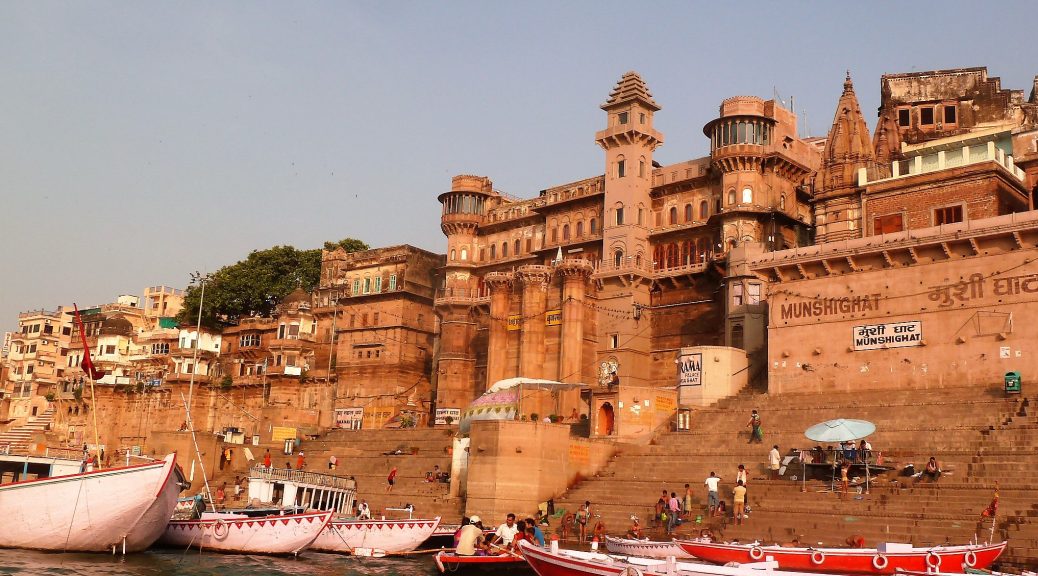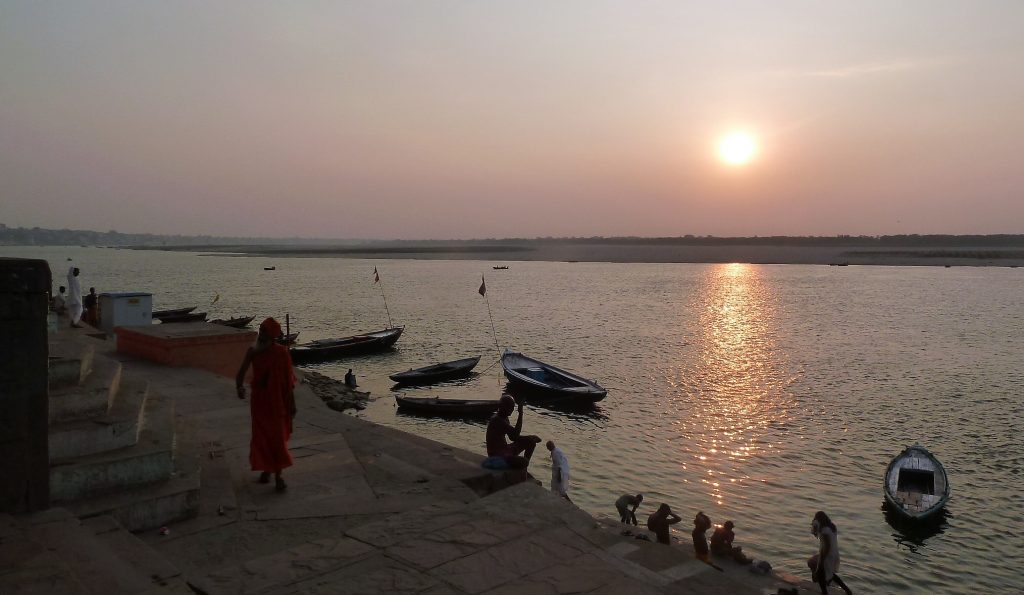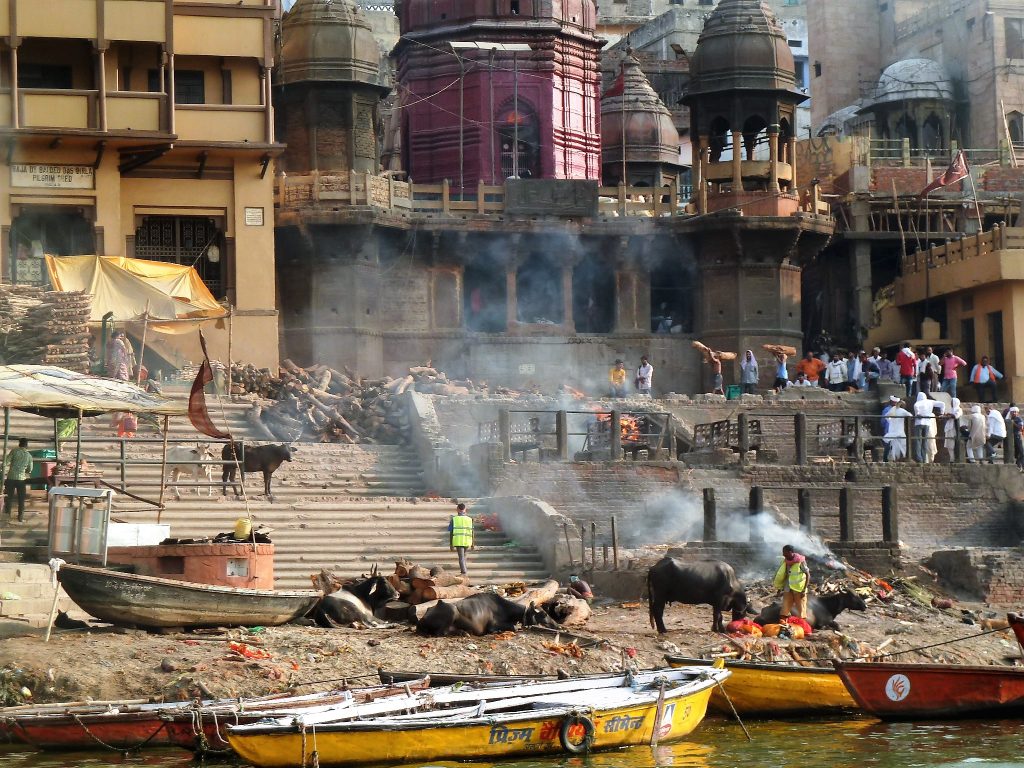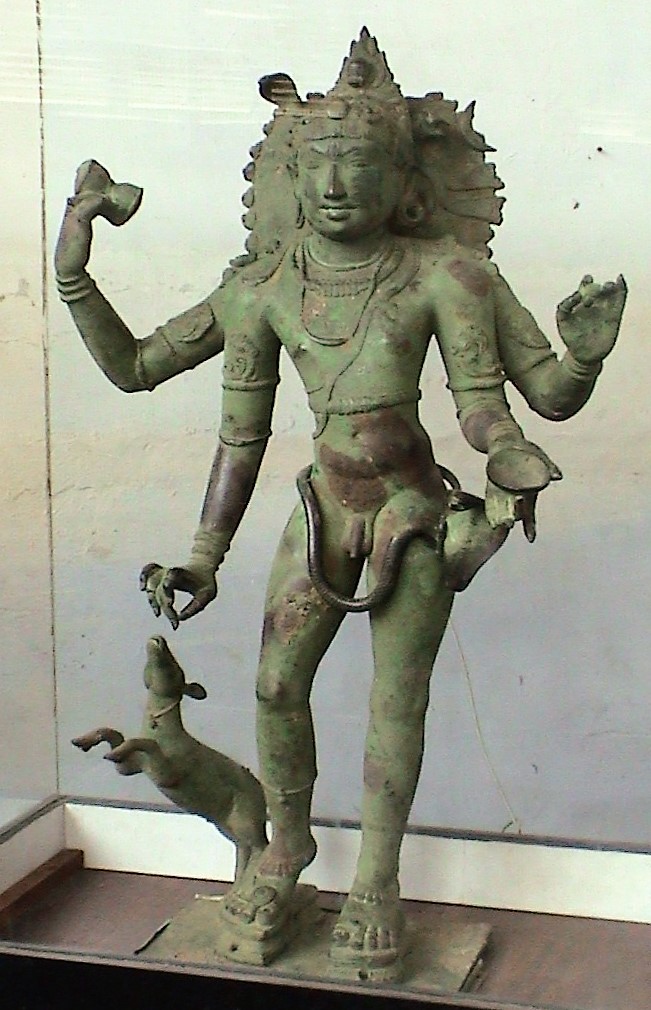Hardwar is known to have historically gone through multiple names before it permanently became known as Hardwar. Some of these names are known as Ahoganga, Gangadvara, Mayapuri, Kapildvara (named after the sage Kapila) and Swargadwara, meaning the way to heaven (Karar 101). Hardwar lastingly got its name from the combination of “har” meaning “Lord Shiva” and “dwar” meaning “gateway to the land of Gods” (Bajpai, Yadav and Pandey 226). The first settlers of Hardwar are believed to have been the Rajputs of Pauri, more specifically Raja Islam Singh who is believed to be the founder of the city of Hardwar (Karar 101). Hardwar being ruled by the Rajputs of Pauri came to an end, but they are still found to be living in areas close to Hardwar. A wide range of communities are involved in the famous pilgrimage activities that occur in Hardwar. For example, during the Kanwar Mela, which is the largest yearly festival that takes place in Hardwar, Hindus from nearby cities of Uttar Pradesh, Uttarakhand and Haryana “ritually carry the holy water of the Ganga in small pitchers” (Karar 102) known as Kanwar. Muslim artisans travel down to Hardwar to make these Kanwar.
Hardwar is geographically positioned in northern India in Uttarakhand between the latitudinal parallel and longitudinal meridian (Sultan 9). The city has approximately 225, 235 inhabitants and is about 42.01km2 (Bajpai, Yadav and Pandey 227). Hardwar’s positioning contributes to the city being an extremely famous pilgrimage centre due to it being full of both natural and cultural tourism resources. Some of the natural resources include the Ganga river, hills, forests, elephants, tigers and jungle cats (Sultan 10), which also contributes to Hardwar’s aesthetic. The Ganga river is the most important factor in determining Hardwar’s religious significance as it is regarded as the most holy and scared river in the world to the Hindus since time that is immemorial (Bhutiani et al 1). Some of the cultural resources found in Hardwar are Temples, Ashrams and Dharamshalas. A major place of pilgrimage is the Maya Devi Temple located in Hardwar, which is the temple of the deity Adhisthatri and is known to be “where the heart and navel of Goddess Sati had fallen” (Sultan 11).
Due to Hardwar’s religious/ritual significance there are many festivals and fairs that take place in the city. There is a religious festival that takes place almost every month: in January they celebrate the Makar Sakranti, the Maha Shivratri is celebrated from February-March, March-April is the Ram Navmi, in April they also celebrate Baisakhi, Buddha Poornima and Ganga Saptami are celebrated in May, Kanwar Mela is in June, Somwati Amavasya is in July, August holds the Janmashttmi, in October they celebrate the Durga Puja and finally, in November the Kartik Poornima is celebrated (Karar 103). Around 2-2.5 million people take part in these festivals (Sultan 11). As well, there is the Kumbha Mela. This festival only takes place every twelve years, marking when the sun is in Aries and Jupiter (Brihaspati) enters into the zodiac sign Aquarius (Kumbha) (Sultan 11). Some Hindus believe that Adi Shankaracharya, who is an Indian philosopher that “consolidated the doctrine of Advaita Vedanta, sub-school of hindu philosophy” (Karar 103) revived the festival and in turn revived Hinduism. The Kumbha became one of the world’s largest religious gatherings, with Hindus from all over the world wanting to revive themselves by taking part in the many religious discussions, preaching and gathering blessings that occur, this is done by participating in the mass bathing in the Ganga river (Karar 103). The initiation of the Kumbha Mela is believed to be a commemoration for the event of the Devas (Gods) and the Danavas (Demons) churning the ocean and finding an Amrita-kumbha, which is a potful of nectar (Karar 101). Many rival parties fought for its possession and when the Kumbha was being taken to safety a few drops of nectar fell out of the pot and onto the site. In the year 2010 more that 80 million pilgrims visited Hardwar during the Kumbha Mela to dip in the holy water of the Ganga river (Sultan 11). It has been examined that the summer months show the biggest rise in tourists to Hardwar. This makes sense due to the fact that that the summer months mark the beginning of pilgrimage of Badrinath and Kedernath following the dip in the holy Ganga river at Hardwar (Sultan 12).
As the Kumbh Mela is the most important ritual festival for the Hindus, the attraction of many priests, saints and yogis from all over India results in a massive rise in noise levels for the city. A study done by Madan and Pallavi (2010) evaluated the noise level of Hardwar during the Kumbh Mela compared to a normal day in the city, along with the impact this noise has on the inhabitants of Hardwar’s health. The noise levels were monitored at four different locations, the first being the Singh Dwar, which is considered the entry point of Hardwar. This location was shown to be extremely crowded with traffic and high noise levels (Madan and Pallavi 293). The second location is the Rishikul, which is a bus stop that is temporarily set up during the Kumbh Mela festival, constant horns and shrieking take place here as all traffic of the city passes by this location (Madan and Pallavi 293). The Har Ki Pauri is the third location under evaluation, it is known as the main centre of attraction for tourists in Hardwar, as hundreds of Hindus move towards it to ritually bathe in the holy Ganga river (Madan and Pallavi 293). At the Har Ki Pauri loud religious music is blasted all day and night, as well it is an extremely crowded area (Madan and Pallavi 293). The fourth and final location under examination is the Chandi Ghat, which is the junction that is very close to the Har Ki Pauri where “all round the year tourist and pilgrimage activity is clearly visible” (Madan and Pallavi 293). The results found in the study showed that the noise created during the Kumbh Mela festival impacted human health by inducing headaches, which caused a difficulty to concentrate. As well, Hindus got less sleep at night, making them tired or fatigue. The noise also resulted in increased blood pressure and hearing problems (Madan and Pallavi 295). These various impacts are significant because the Kumbh Mela is intended to be a festival in which Hindus take part in many religious rituals to seek Moksha; therefore, it is important for them to be at optimal health and peace; therefore, having little to no factors affecting their physical or mental health.
For someone who practices religion, pilgrimage can in some cases be regarded as extremely important and significant because it represents someone’s search for happiness, bliss and satisfaction (Maheshwari and Punima 1). Pilgrims who would travel to Hardwar to participate in another religious festival admired by the Hindus called the Ardha-Kumbha, which is only celebrated every six years would travel through dense forests, rivers and rivulets (Karar 101). Kings, saints and ascetics and general pilgrims would travel by foot, on bullock-carts, horse-back, on camels or on elephants in large groups (Karar 101) and it would take months to actually reach Hardwar. On the auspicious occasion of the Ardha-Kumbha roughly 18 million people dip into the Ganga river (Maheshwari and Punima 1), which shows the religious significance of pilgrimage. Dipping in the Ganga river during these religious festivals is regarded as a Hindu attempting to attain Moksha, which is “salvation from the cycle of rebirth and freedom from one’s sins” (Maheshwari and Punima 1). Hindus believe themselves to feel closer to God by following the various rituals of the multiple festivals (Maheshwari and Punima 1). Some of the daily activities of the festivals include bathing in the Ganga, worshiping (Puja), listening to religious discourses voiced by saints and attending the various performances of the Hindu epics (Maheshwari and Punima 1). In a study done by Maheshwari and Punima (2009) the Ardha-Kumbha festival resulted in Hindus feeling more satisfied with life, relieved of all their tensions from their daily tasks and attainment of inner tranquility and peace (Maheshwari and Punima 1). They also found the religious festivals to aid people overcome terrible situations, such as, loss of a family member or loved one (Maheshwari and Punima 1).
Since the Ganga river is one of the most scared rivers in the opinion of the Hindus, concern has been raised regarding the mass amounts of bathing that take place in the river. During the festivals of the Kumbh and the Ardh-Kumbh there is special importance placed on the ritual of bathing in the Ganga river. Therefore, during these festivals millions of people dip into river and bathe themselves (Sultan 14). During the 2010 Kumbh Mela, which began in January and carried on until April there were 11 bathing dates throughout the 104-day festival which took place at Hardwar (Sultan 14). Around 80 million people took part in bathing in the Ganga river, which severely affected the quality of the water in the Ganga. This raised concern for the health of people who participate in the ritual of bathing in the river, as well, for the people downstream who drink the water from the river (Sultan 14). A study done by Sharma, Bhadula and B.D. Joshi (2010) suggested that the bathing leads to an increase in Bio-chemical oxygen demand, total dissolved solids and a decrease in dissolved oxygen. When the water quality was tested before and after the festival drastic changes were found in the physio-chemical and the microbiological dimensions of the Ganga river (Sharma, Bhadula and B.D. Joshi 4). The water quality did not show improvement, it only got worse, which resulted in stray dogs and pigs being attracted to the river. These unsanitary conditions caused various contagious and airborne diseases (Sharma, Bhadula and B.D. Joshi 4). Studies show that the holy river has reached frightening levels of pollution (Sultan 13). Eighty-nine million litres of sewage from nearby cities are dumped into the Ganga river, which is extremely alarming (Sultan 13). This is not only alarming for the Hindus who take part in these ritual practices, as their health is in danger, but this is also concerning for the religion itself. Concern is raised for the religion due to reasons of these festivals and activities having to eventually be changed or forgotten because of the issues that pollution is causing in regards to people’s health.
Another study done by Bhutiani at al. (2016) suggested that the mass bathing that takes place in the Ganga river developed a range between good and medium water quality. Whereas, after further studies took pace it was found that the water quality of the river is poor. Thus, it is evident that the water quality of the Ganga river ranges from poor to good (Bhutiani at al. 1). The study concluded the primary sources of pollution are sewerage, solid and liquid waste contaminants or organic nature that all enter into the river. Although, the mass bathing that takes place during the religious festivals does not aid in the cleanliness of the Ganga river quality. Inhabitants of the area should take necessary measures to reduce the risks of future contamination entering the river, not only for the health of people living in the area and Hindus who practice these bathing rituals, but for the practices and rituals themselves and their survival in the religion as they are extremely significant in the many festivals held in Hardwar.
Hardwar has proven itself to be an extremely important location for those who practice Hinduism due to its major festivals such as the Kumbha Mela and the Ardha-Kumbha Mela festivals. The positioning of Hardwar close to the Ganga river is the largest contributor to its religious significance because of the ritual importance placed on the river during the Kumbha Mela and the Ardha-Kumbha Mela festivals. Considering the results from the multipul studies examined precautions should be taken in the future in regard to using the Ganga during these important religious festivals to avoid the spreading of more diseases and sickness among the Hindus, as their health is the most important.
References and Further Recommended Reading
Bajpai, Yadav and Pandey (2015) “Tourism and Tourist Influx Evaluation and Analysis in Haridwar and Rishikesh Townships of Uttarakhand.” Dept. of Geography, Kumaun University. issn- 2348-0459.
Bhutiani, D.R. Khanna, Kulkarni and Ruhela (2016) “Assessment of Ganga River Ecosystem at Haridwar, Uttarakhand, India With Reference to Water Quality Indices.” Applied Water Sci 6, 107-113 (2016). https://doi.org/10.1007/s13201-014-0206-6
Karar (2010) “Impact of Pilgrim Tourism at Haridwar.” Anthropologist, 12(2): 99-105 (2010).
Maheshwari, Singh (2009) “Psychological well-being and pilgrimage: Religiosity, happiness and life satisfaction of Ardh-Kumbh Mela pilgrims (Kalpvasis) at Prayag India.” Department of Humanities and Social Sciences, IIT. https://doi.org/10.1111/j.1467-839X.2009.01291.x
Madan and Pallavi (2010) “Assessment of Noise Pollution in Haridwar City of Uttarakhand State, India During Kumbh Mela 2010 and its Impact on Human Health.” Journal of Applied and Natural Science 2(2): 293-295 (2010). https://doi.org/10.31018/jans.v2i2.137
Sharma, Bhadula and B.D. Joshi (2010) “Impact of Mass Bathing on Water Quality of Ganga River During Maha Kumbh.” Nature and Science 2012;10(6): 1-5.
Sultan (2015) “Tourism, Economy and Environmental Problems of a Religious Town: A Case Study on Haridwar, Uttarakhand, India.” Lecturer, Dept. of Geography, Hiralal Majumdar College. issn- 2319-7722.
Related Topics for Further Investigation
Kumbh Mela
Ardha-Kumbha Mela
Maya Devi Temple
Ganga river
Pilgrimage
Amrita-Kumbha
Makar Sakranti
Maha Shivratri
Ram Navmi
Baisakhi
Buddha Poornima
Ganga Saptami
Kanwar Mela
Somwati Amavasya
Janmashttmi
Durga Puja
Kartik Poornima
Noteworthy Websites related to the Topic
https://www.britannica.com/topic/Kumbh-Mela
https://en.wikipedia.org/wiki/Kumbh_Mela
https://en.wikipedia.org/wiki/Maya_Devi_Temple,_Lumbini
https://en.wikipedia.org/wiki/Pilgrimage
This article was written by: Teneal Laturnus (Spring 2020), who is entirely responsible for its content.




